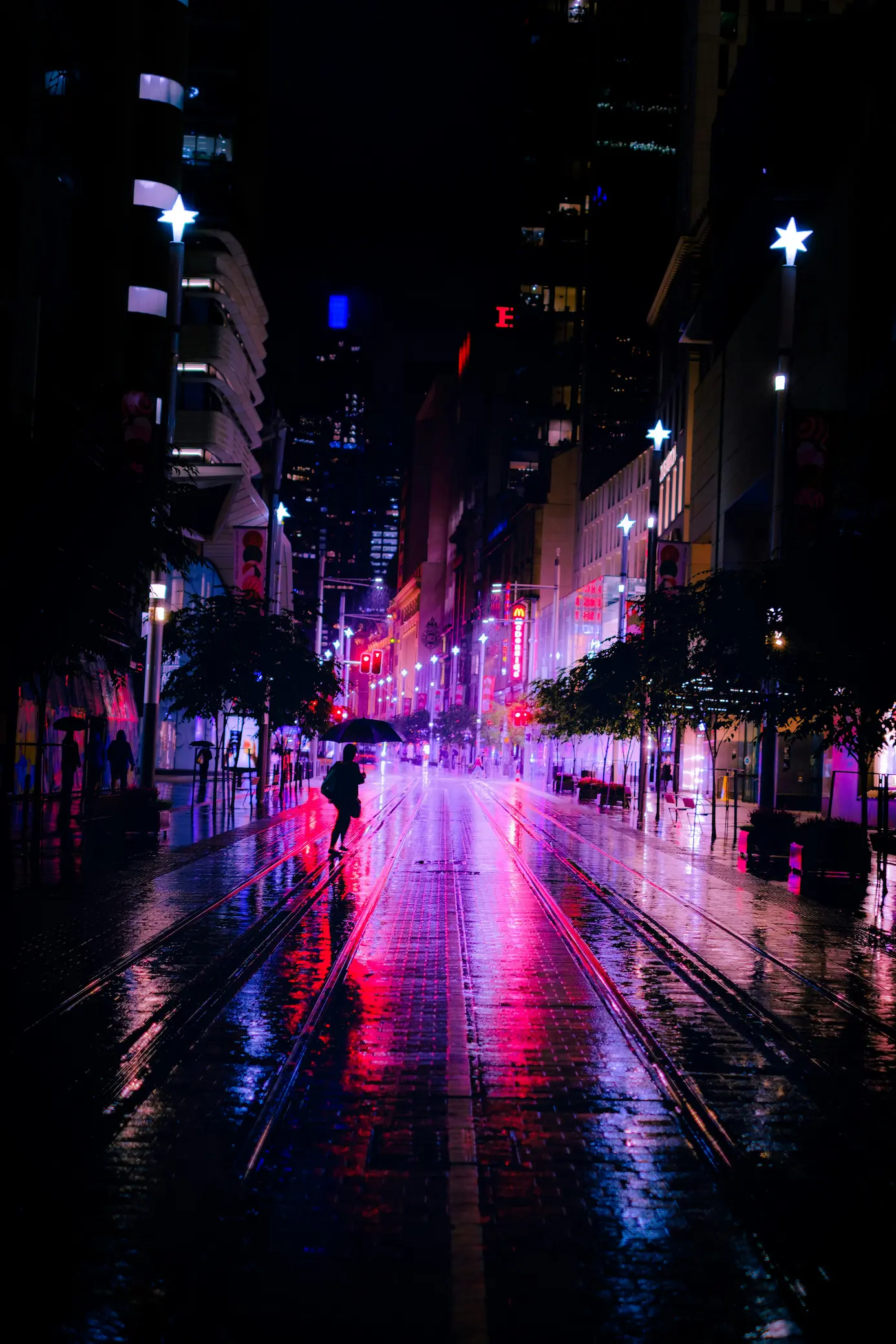BetterWebsites Theme Features
published 2025-01-12
table of contents
The table of contents should show here

photo by @lorenzoherrera on Unsplash | Licensed under Unsplash License.
This is a simple gohugo theme. It doesn’t use a CSS framework but a smallish custom CSS file, uses a system font stack (and also defaults to load Atkinson Hyperlegible if the user has it installed on their system), contains no Javascript, utilizes bootstrap icons through SVG, respects dark vs light mode of the user, loads fast, and follows a minimalist/utilitarian/brutalist design. All while looking great and being responsive, supporting modern browsers. Importantly, it tries to follow a designed-to-last mentality.
How to add this theme to your GoHugo Site
cdinto your hugo site.- Add
git submodule add [email protected]:sparklepanic/betterwebsites.dev.git themes/betterwebsites cdinto the theme and fill out the config.toml and you’ll be good to go!
How to update the theme after new updates have been published to Github
cdinto your hugo sitegit submodule update --remote
If you’re downloading your repos with this submodule already in it you’ll probably need to:
git submodule update --init --recursive
The homepage is controlled by the main Hugo config
Contents of hugo.toml at our site root:
baseURL = 'https://example.org/'
languageCode = 'en-us'
title = 'betterwebsites.dev'
theme = '../..'
copyright = "Except where otherwise noted, content on this site is licensed under a [Creative Commons Attribution license](https://creativecommons.org/licenses/by/4.0/). Site theme [under MIT license](/theme/LICENSE). This creator is dedicated to the sharing of art, science, and ideas. See the [privacy policy and legal information](/legal) here."
date_format = "2006-01-02" # Because anything other than ISO8601 is folly
[markup.highlight]
style = "dracula"
# This theme is meant to get most of the homepage data right from the config.toml. The `name` parameter will be the title of the homepage, with provided pronouns below the name. The `bio` parameter is piped to Markdownify so you can write your bio in markdown.
[Params]
name = "BetterWebsites"
firstname = "BetterWebsites"
pronouns = "she/they/he/xe"
bio = """
An example site for this minimalist [GoHugo](https://gohugo.io/) theme so you too can escape the hell that is social media. Bring back the [Myspace era](https://www.codecademy.com/resources/blog/myspace-and-the-coding-legacy/), insightful [blogs](https://manuelmoreale.com/on-the-state-of-the-web), great [info sites](https://transfemscience.org/articles/transfem-intro/), easily readable [RSS](https://www.404media.co/404-media-now-has-a-full-text-rss-feed/), and [a place for all of us on the web](https://indieweb.org/).
"""
# This is an optional About section. Comment out all the lines from about to the last 3 quote marks to disable.
about = """
- Optional About section. Comment out all the lines from about to the last 3 quote marks to disable in the `hugo.toml`.
- It's piped to Markdown and accepts shortcodes.
{{< figure src="/webp/lorenzo-herrera-p0j-mE6mGo4-unsplash.webp" link="/highres/lorenzo-herrera-p0j-mE6mGo4-unsplash.jpg" alt="An arched bridge over a pond of water with greenery all around" caption="*photo by [@lorenzoherrera](https://unsplash.com/photos/vintage-gray-game-console-and-joystick-p0j-mE6mGo4) on Unsplash* | Licensed under [Unsplash License](https://unsplash.com/license)." >}}
"""
# Below you can put links for your home page with supported Bootstrap icons
[[Params.links]]
url = "https://github.com/sparklepanic/betterwebsites.dev"
text = "BetterWebsites code"
icon = "github"
[[Params.links]]
url = "/posts/theme"
text = "Theme Features"
icon = "star"
[[Params.links]]
url = "https://infosec.exchange/"
text = "Mastodon"
icon = "mastodon"
#html_attributes = "rel=\"me\"" # To provide Mastodon verification
[[Params.links]]
url = "https://instagram.com/"
text = "Instagram"
icon = "instagram"
[[Params.links]]
url = "/posts/index.xml"
text = "Subscribe via RSS"
icon = "rss-fill"
[outputs]
home = ['html']
section = ['html', 'rss']
taxonomy = ['html']
term = ['html', 'rss']
Examples (this is a Level 2 header)
- Here is emphasis
- Here is bold
- Here is
cross out
Here’s a table. It’s just a sample of what a table looks like in this theme.
| Website | Why it’s important |
|---|---|
| https://en.wikipedia.org | It has most of human knowledge in a readable, reliable format. One of the coolest things to ever exist! |
| https://web.archive.org | The Internet is forever. |
| https://genderdysphoria.fyi/ | “The purpose of this site is to document the many ways that Gender Dysphoria can manifest, as well as the numerous forms of gender transition, in order to provide a guide for those who are questioning, those who are starting their transgender journey, those already on their path, and those who simply wish to be better allies.” |
| https://theguardian.com/us | Probably the best current news source out there. |
| https://pmc19.com/data | Best site for current COVID data. |
We can talk about code by talking about things like the sudo command with single backticks inline (or as an alternative to kbd like control + alt + delete), or we could do code blocks:
mkdir example-folder
cd example-folder
touch newfile.md
cat this is some text >> newfile.md
Here is what a link looks like and here is a block quote:
It is always brave to insist on undergoing transformations that feel necessary and right even when there are so many obstructions to doing so, including people and institutions who seek to pathologize or criminalize such important acts of self-definition. I know that for some it feels less brave than necessary, but we all have to defend those necessities that allow us to live and breathe in the way that feels right to us. Surgical intervention can be precisely what a trans person needs–it is also not always what a trans person needs. Either way, one should be free to determine the course of one’s gendered life.
— Judith Butler
Both light-mode and dark-mode styling allows for a:visited but with different styling.
Info box example
Info boxes with a dedicated customshortcode are supported. You can input a custom title at the top and then this text. It also pipes to markdownify. The gradient colors are different between dark and light modes. =) This is done by:
{{< box title="Info box example" src="Info boxes with a dedicated custom `shortcode` are supported. You can input a custom title at the top and then this text. It also pipes to `markdownify`. The gradient colors are different between dark and light modes. =)" >}}
Level 3 headings are the lowest heading
The idea is to minimize level 3 headings all-together and just use level 1 and level 2 headings. I’m following Edward Tufte and Richard Feynman’s example:
[It is] notable that the Feynman lectures (3 volumes) write about all of physics in 1800 pages, using only 2 levels of hierarchical headings: chapters and A-level heads in the text. It also uses the methodology of sentences which then cumulate sequentially into paragraphs, rather than the grunts of bullet points. Undergraduate Caltech physics is very complicated material, but it didn’t require an elaborate hierarchy to organize.
— Edward Tufte, forum post, ‘Book design: advice and examples’ thread
Media
Images are always hard to get right. Too many images or images that aren’t optimized correctly or not displaying alt-text can take away from a good browsing experience.1 Same with images not displaying well on different viewports.
The below photo is displayed with the Hugo figure shortcode as such:
{{< figure src="/webp/soheb-zaidi-AYS2sSAMyhc-unsplash.webp" link="/highres/soheb-zaidi-AYS2sSAMyhc-unsplash.jpg" alt="" caption="*Photo by [@msohebzaidi](https://unsplash.com/photos/people-walking-on-street-during-night-time-AYS2sSAMyhc) on Unsplash* | Licensed under [Unsplash License](https://unsplash.com/license)." >}}

Photo by @msohebzaidi on Unsplash | Licensed under Unsplash License.
Note that the src is to a webp in its own directory and it links to a highres version also in its own directory. The process for this is to:
- Take the edited jpg and use https://squoosh.app to output a webp photo at a reasonable pixel size
- Place the squooshed webp into the
webpdirectory and the original jpg into thehighresdirectory - Create the shortcode for the photo in the markdown document
- Enter the alt-text and caption with optional EXIF
The reason for this process is that I want the website to load fast and the images to not be unwieldy but to allow for people to see or download the full-res images if they’d like to. I also often lazy load images not in the immediate viewport with loading="lazy" in the figure shortcode.
It also allows me to link the full-res version and send it to people directly if they ask me to SMS it to them or email it to them. I’m not super interested in a traditional gallery style page.
Video is similarly using a shortcode:
{{< video src="/video/*" autoplay="true" muted="true" loop="true" >}}
Video by @maksgelatin on Pexels. Used under Pexels license.
Use the shortcode for Bootstrap Icons to display them:
{{< svg ico="lock" >}} Locked!
Locked
Or custom SVG’s like this one with the svg-plain shortcode:
{{< svg-plain "/static/svg/line-md--compass-loop.svg" >}}
Check out all these other cool SVGs at Iconify. Icon under MIT license
Other aspects
This theme has a few other aspects that are worth highlighting:
- When a post has
lastmodin the frontmatter, it is listed in the blog order with the lastmod date. This will allow modified posts to show up near the top of the blogroll when edited. - The date format is the year in ISO8601
- Sticky top bar for navigation
- Easily plug in the homepage links to the
config.tomlwith Bootstrap icons - RSS link because RSS is fucking cool!
- When selecting text, the text is yellow (except on Apple systems for some reason)
- There is a custom 404 page
Things I plan to add
- An audio short-code for hosted audio
- Add favicon
- Fix descriptions of pages to display relevant metadata when people share links
-
This is what a footnote looks like. I spent hours trying to get
scroll-margin-topworking with the sticky header!! ↩︎